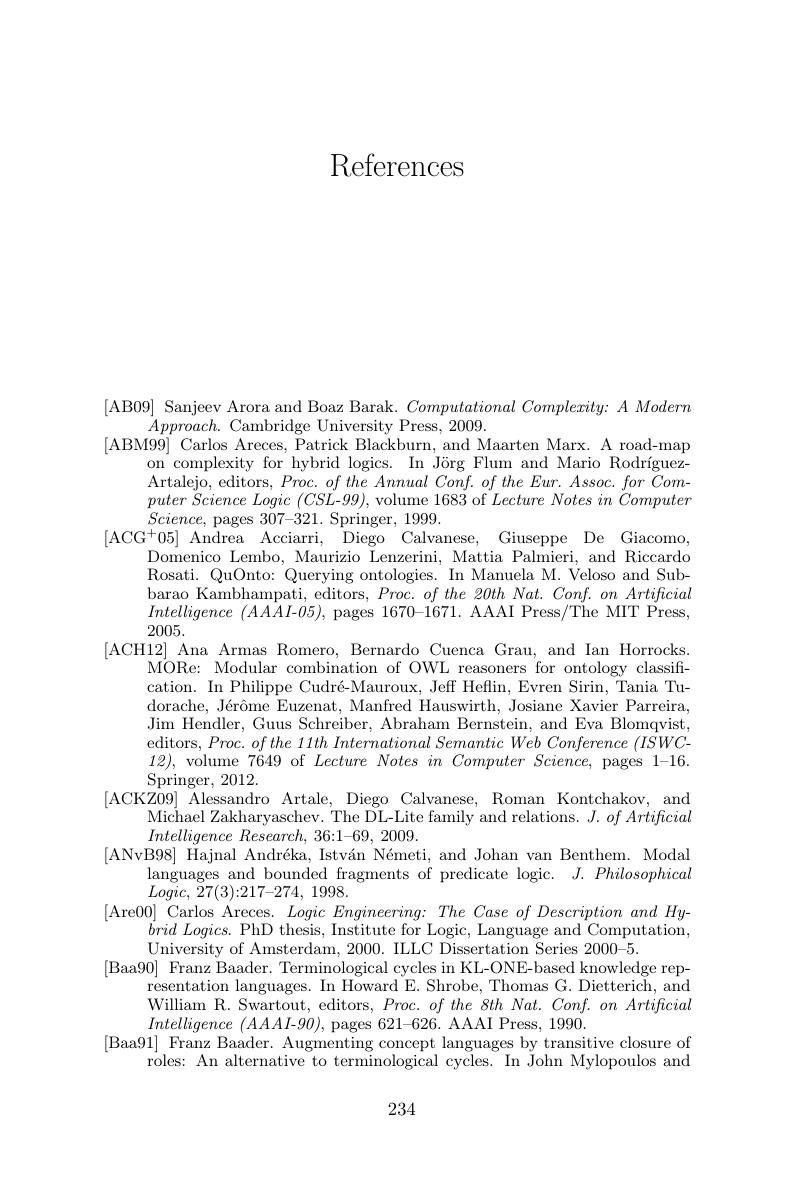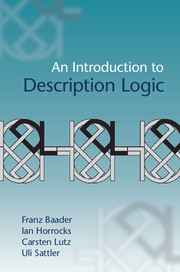Book contents
- Frontmatter
- Contents
- 1 Introduction
- 2 A Basic Description Logic
- 3 A Little Bit of Model Theory
- 4 Reasoning in DLs with Tableau Algorithms
- 5 Complexity
- 6 Reasoning in the EL Family of Description Logics
- 7 QueryAnswering
- 8 Ontology Languages and Applications
- Appendix Description Logic Terminology
- References
- Index
- References
References
Published online by Cambridge University Press: 13 June 2017
- Frontmatter
- Contents
- 1 Introduction
- 2 A Basic Description Logic
- 3 A Little Bit of Model Theory
- 4 Reasoning in DLs with Tableau Algorithms
- 5 Complexity
- 6 Reasoning in the EL Family of Description Logics
- 7 QueryAnswering
- 8 Ontology Languages and Applications
- Appendix Description Logic Terminology
- References
- Index
- References
Summary

- Type
- Chapter
- Information
- An Introduction to Description Logic , pp. 234 - 251Publisher: Cambridge University PressPrint publication year: 2017

